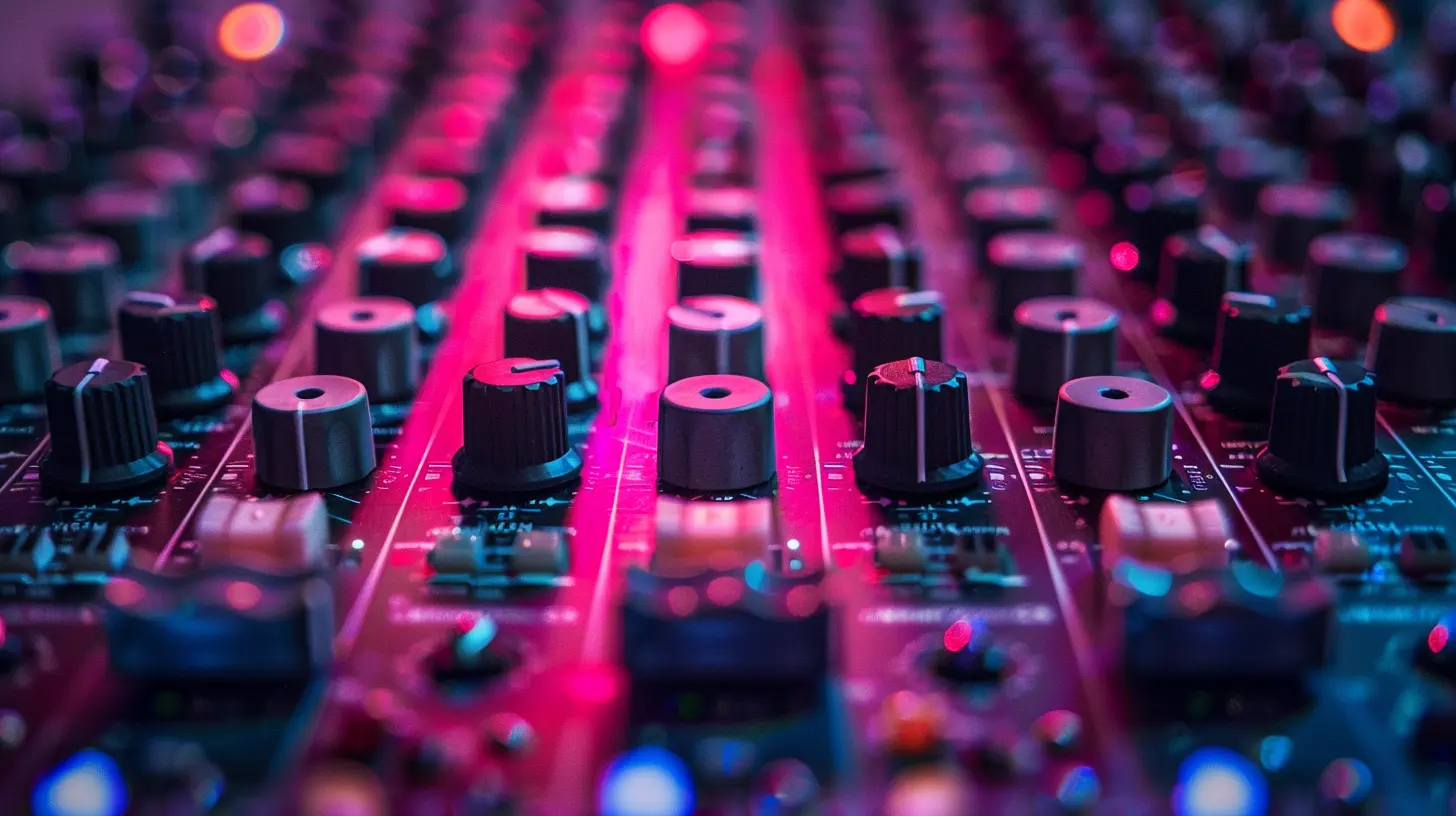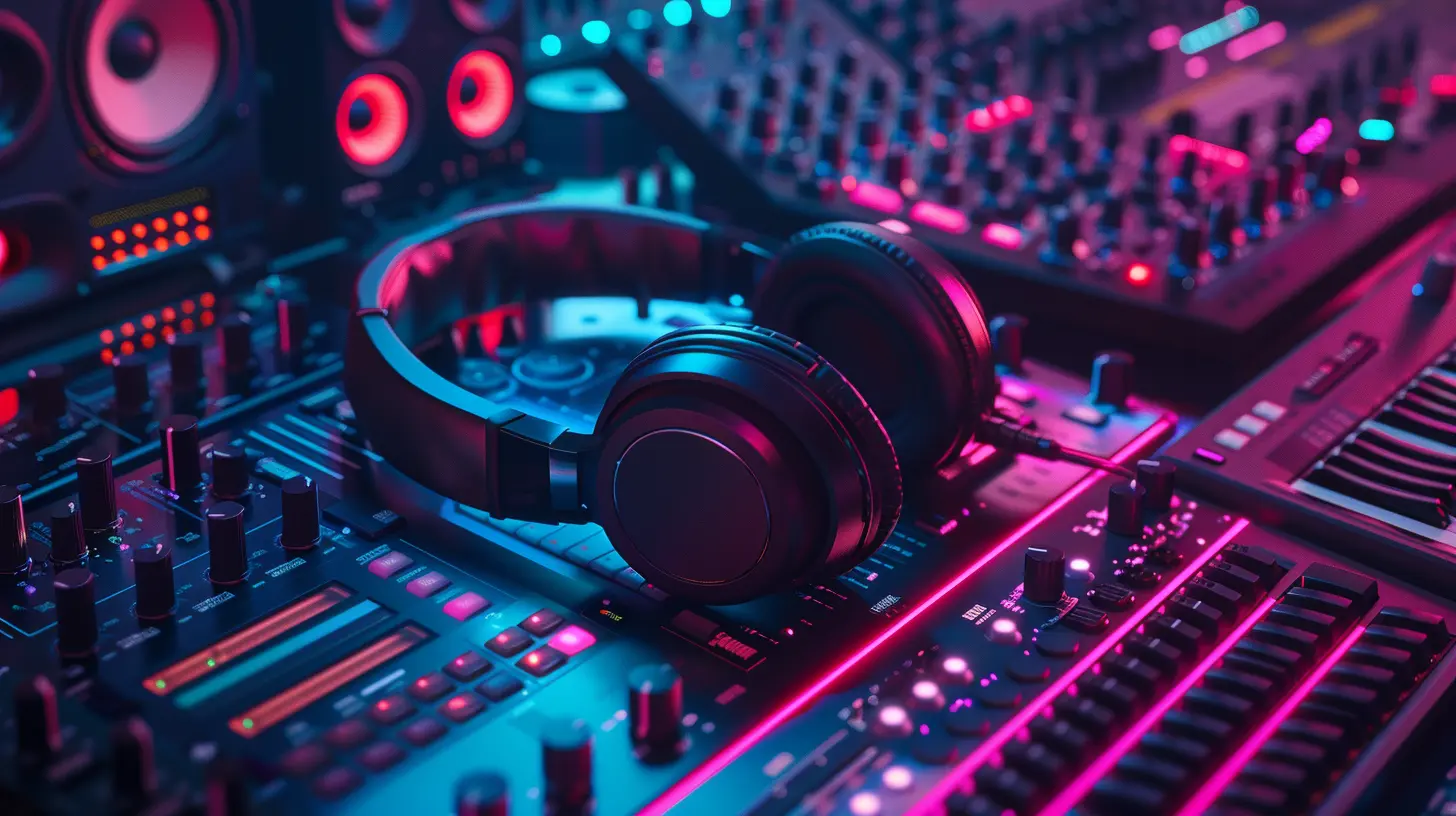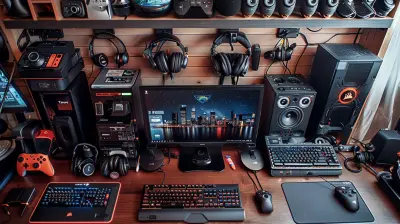Exploring the Audio Capabilities of Different Game Engines
30 May 2025
Whether you’re sneaking through the dense underbrush of an ancient jungle, engaging in a high-speed car chase, or battling otherworldly creatures in space, there's one thing that has the power to immerse you completely in these experiences — audio. From sharp footsteps on gravel to the haunting wail of a distant siren, sound plays an unsung (pun intended) hero in video games. But how does the magic happen? It all comes down to the game’s engine.
In this article, we’ll dive into the audio capabilities of different game engines, so whether you’re a budding indie developer or just someone who’s curious about the tech behind the games, you’ll leave here with a smile on your face and, hopefully, a newfound appreciation for what makes our favorite games sound so good. 
Why Audio Is the Silent MVP of Gaming
Let’s get one thing straight — audio can make or break a game. You could have the most visually stunning game of the decade, but if your players are slogging through it with choppy or uninspired sound design, trust me, they’ll notice.Imagine this: you’re playing a horror game. The room is pitch dark, and you hear a faint creaking in the distance. That sound alone can send shivers down your spine, right? Now, picture the same scenario, but the audio is poorly synced or sounds like someone recorded it on their old Nokia phone. Yeah, not so creepy anymore.
Sound adds depth, emotion, and weight to an experience. It’s the difference between “meh” and “OMG, I nearly jumped out of my chair!” But crafting that high-quality audio experience? That’s where game engines step in like rockstar sound engineers. 
What Is a Game Engine, Anyway?
Before we dive into their audio wizardry, let’s clear one thing up: what exactly is a game engine? Think of a game engine as the backbone of a video game. It’s like a super multi-tool for developers, packed with features for creating graphics, physics, mechanics, and, yes, audio.Different game engines come with their own unique audio systems and tools, making them more (or sometimes less) suited to particular types of sound design. So, choosing the right engine is like choosing the right instrument for a song. You wouldn’t use a kazoo in a symphony, right? 
The Audio Titans: Game Engines Worth Talking About
Here’s a look at some of the game engines that have carved out a solid reputation in the audio department.1. Unreal Engine – The Audiophile’s Paradise
If game engines had a sound buddy who obsessed over every detail, it’d be Unreal Engine. Trusted by AAA studios and indie devs alike, Unreal’s audio system packs a serious punch.- What Makes It Shine?
Unreal Engine uses a tool called the Unreal Audio Engine (creative, huh?), which provides robust 3D audio spatialization. Imagine walking through a forest, and you can actually hear birds chirping from specific directions. It’s like surround sound on steroids!
- Key Features:
- Dynamic soundscapes (audio that changes based on player actions).
- Blueprint integration for seamless use by developers who hate coding (no judgment).
- Real-time synthesis and DSP (Digital Signal Processing), which means sounds can adapt on the fly.
Unreal makes sure your games don’t just look like blockbusters — they sound like them too.
2. Unity – The Versatile All-Rounder
Unity is like that friend who can do a little bit of everything and does it all really well. It’s wildly popular and used for everything from mobile games to VR experiences.- What Makes It Shine?
Unity’s audio system is flexible and easy to use, making it great for both seasoned sound designers and newbies who just clicked the download button last week.
- Key Features:
- Built-in support for positional audio, giving players a realistic sense of space.
- Integration with third-party audio middleware like FMOD or Wwise, so you can go full DJ mode.
- Audio mixers for customizing everything from pitch to volume.
Unity’s motto could easily be: “Make your game sound as epic or as quirky as you want!”
3. Godot – The Underdog With a Lot of Bark (And Bite)
Don’t sleep on Godot! Despite being the smaller player in the game engine world, Godot is growing fast — and its audio system is no slouch.- What Makes It Shine?
Godot is open-source, meaning developers can tweak it to their heart’s content. Plus, its audio tools are clean, straightforward, and highly capable.
- Key Features:
- 2D and 3D spatial audio support, perfect for indie devs looking to create immersive worlds.
- Audio buses for layering sound effects, music, and dialogue (it’s like being a conductor of your in-game orchestra).
- A lightweight design that doesn’t overwhelm your hardware.
Godot is proof that you don’t need a big budget to deliver big sound.
4. CryEngine – The Blockbuster Specialist
CryEngine may not be as widely used as Unreal or Unity, but when it comes to realism, it’s a beast. And its audio tools live up to the same standard.- What Makes It Shine?
CryEngine offers top-notch audio fidelity, which is why it’s often used in games aiming for hyper-realistic experiences.
- Key Features:
- Advanced 3D sound propagation (sound changes based on surfaces and distance).
- Real-time reverb and occlusion effects that make environments come to life.
- Seamless integration with middleware tools like Wwise, adding extra layers of audio customization.
It’s not for the faint of heart (or wallet), but CryEngine delivers audio that’ll knock your gaming socks off.
5. RPG Maker – The Nostalgia Machine
RPG Maker doesn’t have all the bells and whistles of Unreal or Unity, but for what it does, it’s perfect. If you’re creating retro-style games, this is your BFF.- What Makes It Shine?
Sometimes, less is more. RPG Maker keeps things simple, yet effective, in the audio department.
- Key Features:
- Prebuilt sound effects and background music that scream “classic RPG.”
- Easy-to-use tools for synchronizing audio with dialogue or events.
- Straightforward implementation that requires zero audio engineering know-how.
For fans of 16-bit nostalgia, RPG Maker nails the vibe every single time. 
Middleware: The Best Friend Every Engine Needs
Okay, let’s get one thing out of the way — even the best game engines aren’t perfect. That’s where audio middleware comes in. Tools like FMOD and Wwise work with game engines to fill in the gaps or provide more advanced capabilities. Think of them as the frosting on your game’s audio cake.Why Use Middleware?
It gives you more control. Want to create a custom echo effect for a cavern or fine-tune the pacing of a heart-pounding chase sequence? Middleware tools make that possible. Plus, they often come with drag-and-drop interfaces to keep things simple.What Should You Look for in a Game Engine for Audio?
Choosing your game engine is like picking the right pair of headphones — you need to know what you’re looking for. Here are a few questions to ask yourself:- What type of game are you creating? A 2D platformer may not need advanced 3D audio spatialization tools.
- What’s your budget? Some engines and middleware tools come with licensing fees. Adjust accordingly!
- What’s your skill level? If you’re just starting out, go for an engine with a more beginner-friendly audio system.
Final Thoughts: Audio Is the Heartbeat of Gaming
At the end of the day, your game’s audio isn’t just background noise — it’s an experience in itself. Choosing the right game engine with the right audio capabilities can elevate your project from “meh” to “masterpiece.” Whether you’re tinkering with Godot, building a sprawling open world in Unreal, or creating a pixel art RPG in RPG Maker, embrace the audio tools at your disposal.Sound design is more than just a technical aspect of gaming; it’s an art. So go ahead — play around, experiment, and make your games sing (figuratively and literally). Who knows? The next iconic game sound could be yours!
all images in this post were generated using AI tools
Category:
Game EnginesAuthor:

Emery Larsen
Discussion
rate this article
4 comments
Xylo Kirkpatrick
Game engines: where sound effects and epic fails collide!
June 22, 2025 at 4:48 PM

Emery Larsen
Absolutely! Game engines can create incredible soundscapes, but technical hiccups can lead to memorable, unexpected moments. It’s all part of the adventure!
Paxton Price
Great insights! Understanding audio capabilities can truly enhance gameplay and player immersion. Thank you!
June 9, 2025 at 3:04 PM

Emery Larsen
Thank you! I'm glad you found the insights helpful for enhancing gameplay and immersion.
Maddox Moore
Unlocking the power of sound can elevate gaming to new heights! Let's dive deep into how different game engines craft immersive audio experiences that captivate and transport players, transforming mere gameplay into unforgettable journeys. The future sounds incredible!
June 5, 2025 at 5:10 PM

Emery Larsen
Absolutely! The evolving audio capabilities of game engines truly enhance immersion, enriching player experiences and transforming gameplay into memorable adventures. Let's explore this exciting frontier!
Coral McCarty
Delving into the audio capabilities of game engines opens up a world of creativity and immersion! Understanding how sound enhances gameplay not only elevates player experiences but also inspires developers to push boundaries. Let’s embrace the power of sound in gaming!
May 31, 2025 at 4:19 AM

Emery Larsen
Thank you for your insightful comment! Sound truly is a vital element that enriches gameplay and fuels creativity in game development. Let's continue to explore and innovate in this exciting area!



